Diwali is not the only Hindu festival this fall. Meet the goddess Durga.
If you’ve watched the hit Netflix show “Never Have I Ever,” you’re already familiar with the avenging goddess of Hindu mythology, Durga.
The show’s lead Indian American character, Devi Vishwakumar, gets her name — and her hot fuse — from the goddess Durga.
Durga — associated with motherhood, protection, strength, destruction and war, and often portrayed riding a tiger, her 10 arms bearing weapons, each pointed at a demon — is revered for ridding the world of evil by defeating the demon Mahishasura.
Possessing the combined energy (shakti) of her creators — the male gods Brahma, Vishnu and Shiva — she is more powerful than any of them, made so by them so she could destroy the indestructible and save the planet.
In other words, she is a hero, a true badass.
Durga — referred to with the honorific "devi," which means goddess — is celebrated for nine nights in September and October during Navratri (“Nav” means 9, “ratri” means night), and in India’s rich diversity of regions and communities, each festival bears the imprint of its unique style.
It is one of many fall festivals that Hindus celebrate, including Ganesh Puja, when devotees worship the god of prosperity, and Dussehra, which marks the destruction of an evil king. The season culminates in the best-known celebration outside India: Diwali, the festival of lights.
In India, where religious practices have long suppressed women, surely her veneration has validated — however subtly — women's and girls’ ideas of who they can be and how they express themselves in a patriarchal society.
And as women's rights are at the top of the news lately — protests in Iran around a young woman’s death at the hands of the country’s “morality police,” the Supreme Court’s ruling on abortion — Durga’s mythological, rage-filled attack and eventual victory over oppression can inspire women in India and beyond.
Navratri’s theme — of good triumphing over evil — is observed across India, but most famously during Durga Puja, (puja means worship) in the eastern state of Bengal.
Celebrating the goddess Durga, here and in India
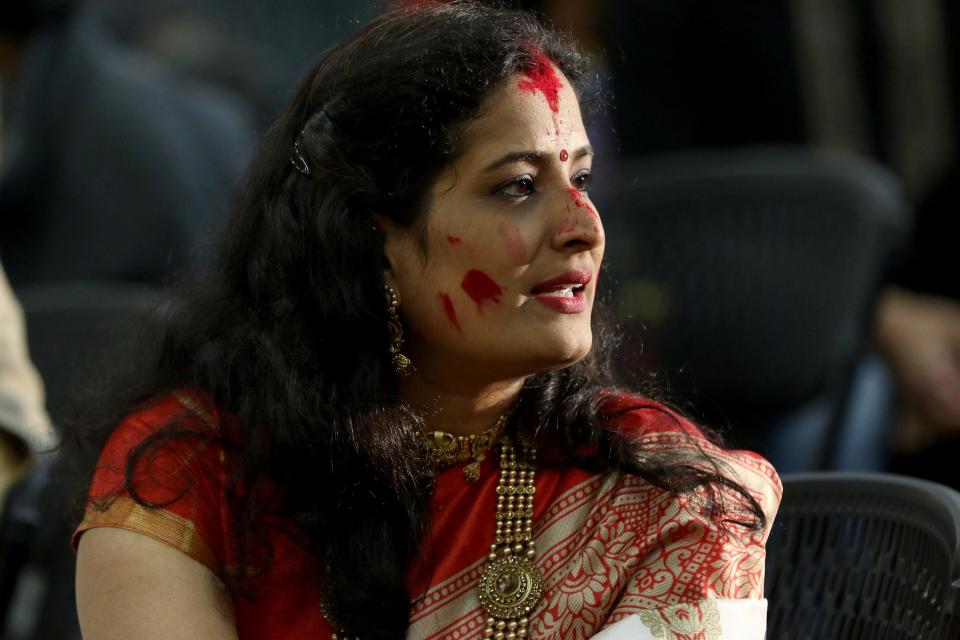
As an Indian transplant, I am always taken by surprise in New Jersey by the Hindu festive season. Without fail, I am overcome every year by nostalgia for the exuberant celebrations I left behind. I have lukewarm religious convictions, but my deep cultural connection to my birth country has me rushing to seek out festivities organized in the state’s Indian American enclaves, and it gives me a reason to flaunt sarees and outfits that would otherwise never see the outside of a suitcase. My family obliges, making for a fun ride.
This year, a friend invited me to join her for Durga Puja. An archetype of womanhood rarely seen or elevated in Western cultures, the goddess stands out.
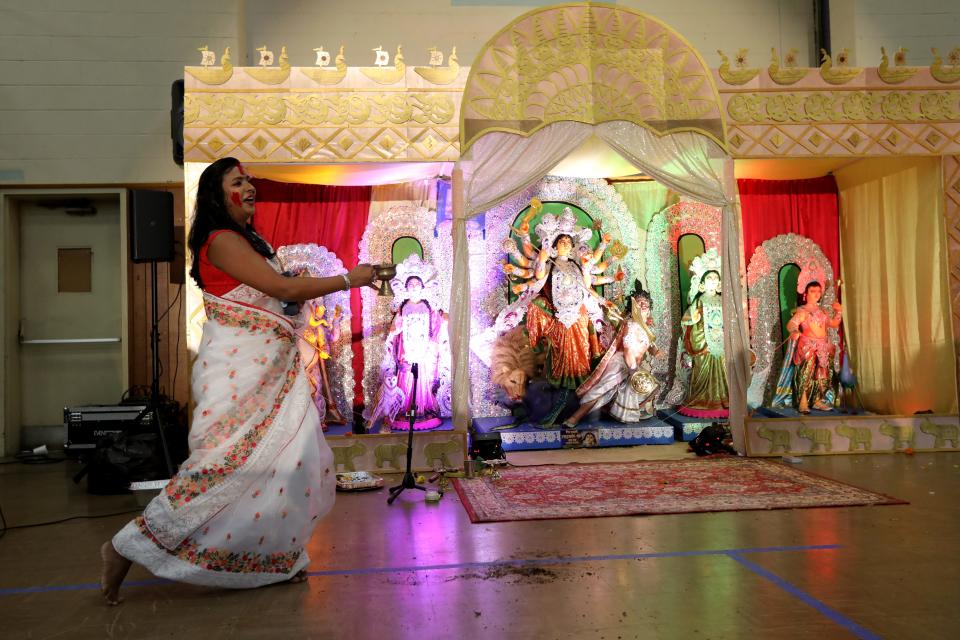
Depictions of her in temples and in art do not attempt to make her pretty or womanly in the traditional sense. She’s powerful. A warrior. But also, when she’s portrayed as Shakti, the wife of the god Shiva, she is genteel and protective.
Like human beings, Hindu gods and goddesses have many sides, and they can manifest in different forms, also called “avatar,” a Sanskrit word familiar to anyone who’s ever played a video game.
When taking the form of Kali, a less mainstream side tied to ancient traditions of goddess worship that predate Hinduism, she is at her most ferocious, full of rage and bloodlust. Legend says she took that form to summon the power to destroy evil demons that were spawned when droplets of blood from Mahishasura, the original demon, hit the ground.
Depending on the region of India, Durga is celebrated in different ways.
During October in the eastern state of Bengal, where she is most venerated, her idols are everywhere, as people flock to celebrate her. They welcome the goddess into their homes, marking her journey from her husband’s home to visit her parents with her children, until the last day of the festival, when clay statues of Durga are immersed in the river Ganges to disintegrate in the water, signifying her returning to the Himalayas with her family.
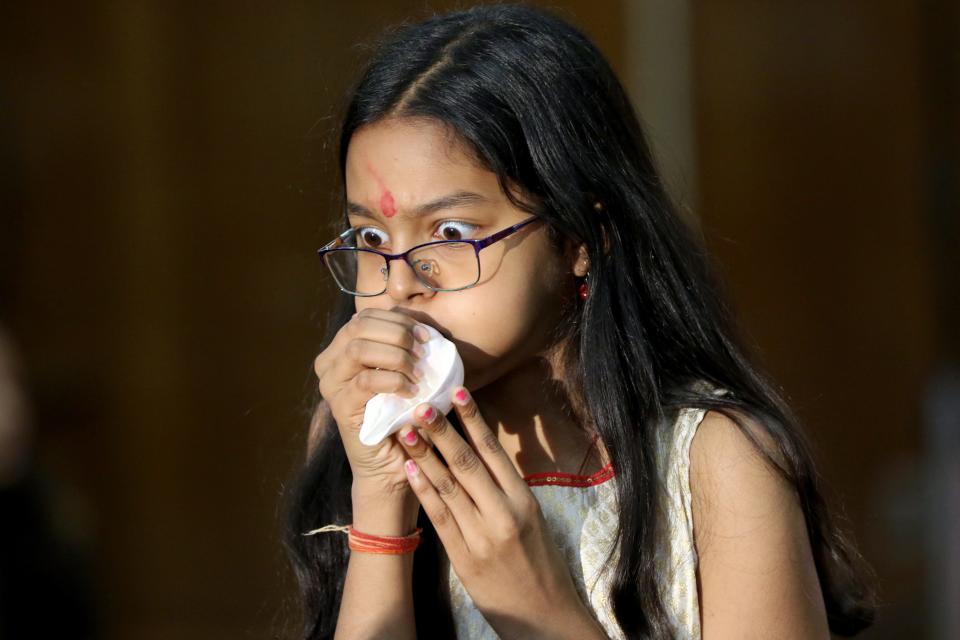
Indians in the western state of Gujarat celebrate Navratri with a dance called the “garba,” where people gather on streets and on park grounds to dance in unison, swaying and swirling through the night in traditional attire, to the changing beat of the “dhol,” or drum.
Hindus in the southern part of India create a Nativity-like display, with statuettes and dolls of Durga and other deities overlooking, in blessing, scenes that celebrate the joys of daily living. Nearly anything goes, from a miniature game of cricket to a village market.
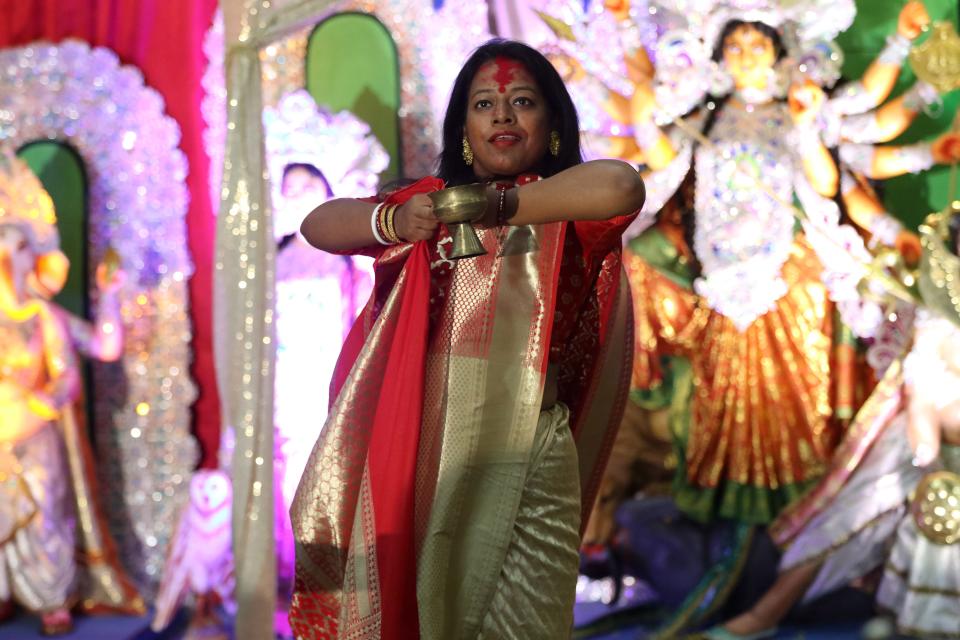
In New Jersey, you can get a taste of this sub-continent spanning a panoply of traditions simply by being an Indian immigrant — or knowing one.
I tagged along with a friend for an early-morning visit to a Bengali temple in Somerset, where classically trained singers sang hauntingly, and I joined other friends a week later for a night of “garba” dancing on the streets of Jersey City between Tonnele Avenue and Kennedy Boulevard — replete with a stage, singers and drummers.
Another celebration was at a friend’s house in Chatham, where the display of deities ended with a homemade meal and much political debating. Durga, or Durga “ma” — the mother — was at the center of all the events.
What Durga means to women (and girls)
I like her. Durga matters to me. She is unselfconscious, primeval and bold. Social norms have not subdued her, and most of all, I see myself in her.
When she takes the form of Kali, there is no holding back. Her black hair streams loose, her mouth is open and bloody, her tongue falling out, head held high and her gaze searing. She wears a necklace of decapitated demon heads and holds one in her hand. She stands on the chest of her husband, the Hindu god Shiva, who lies on the ground.
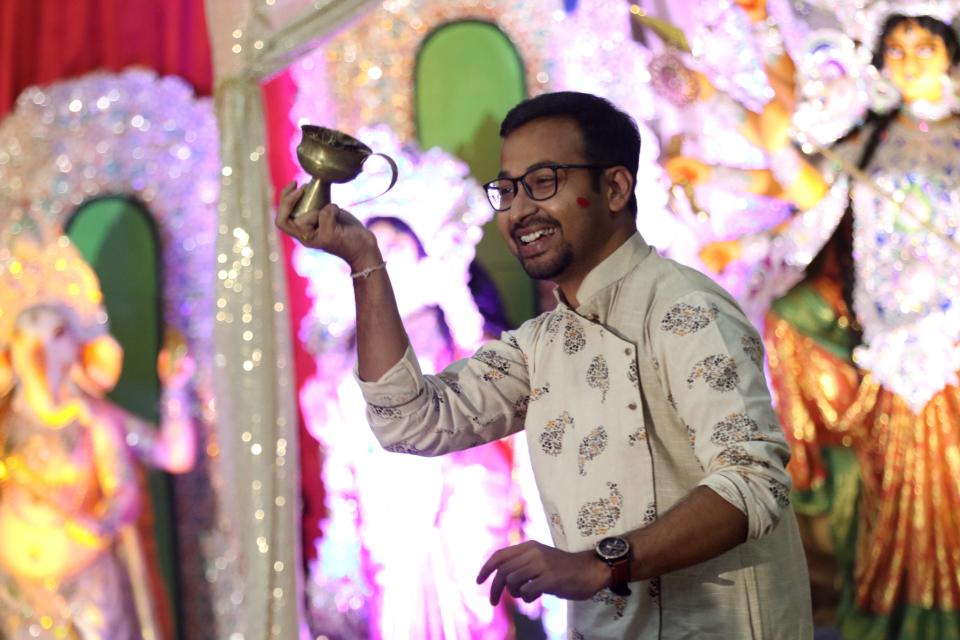
You may ask why her mouth is open and her tongue out and red. Another legend says Shiva lay down to catch his wife’s attention and calm her in her path of fury after killing Mahishasura. He was hoping this would give her pause, but she stopped only after stepping on his chest. Mortified, she gasped and bit her tongue, making it bleed.
I tried to explain the myth and magic of Durga to my 15-year-old daughter as we gazed at the display of deities in our friends’ home in Chatham. Our host joined us, pointing out a colorful DIY temple model she made from a YouTube video, following the practice of adding a new icon to the display every year.
As guests trooped in with their Indian American teens in tow, awkward introductions were aplenty; the parents wanted to socialize and eat, so the kids were forced to hang out and watch football.
Dressed in her formal Indian salwar-kameez, my daughter whispered to me that this was her own “Never-Have-I-Ever" moment.
Ha! I said, pointing out a scene in the first episode when Devi Vishwakumar begs the gods for three near-universal teenage boons: to snag a boyfriend and an invitation to a drunken party and to lose her arm hair.
Did you notice, I asked, making the most of my teachable moment, that when she asks, the camera zooms in on a figurine of the many-armed goddess on her mother’s altar?
“OK, Mom,” she said, with the mildest eyeroll — a priceless expression I’ve never seen on any goddess.
Then she went back to watching football.
Someday — maybe next Durga Puja — she'll remember.
This article originally appeared on NorthJersey.com: Diwali is not the only Hindu festival this fall. Meet Durga.

